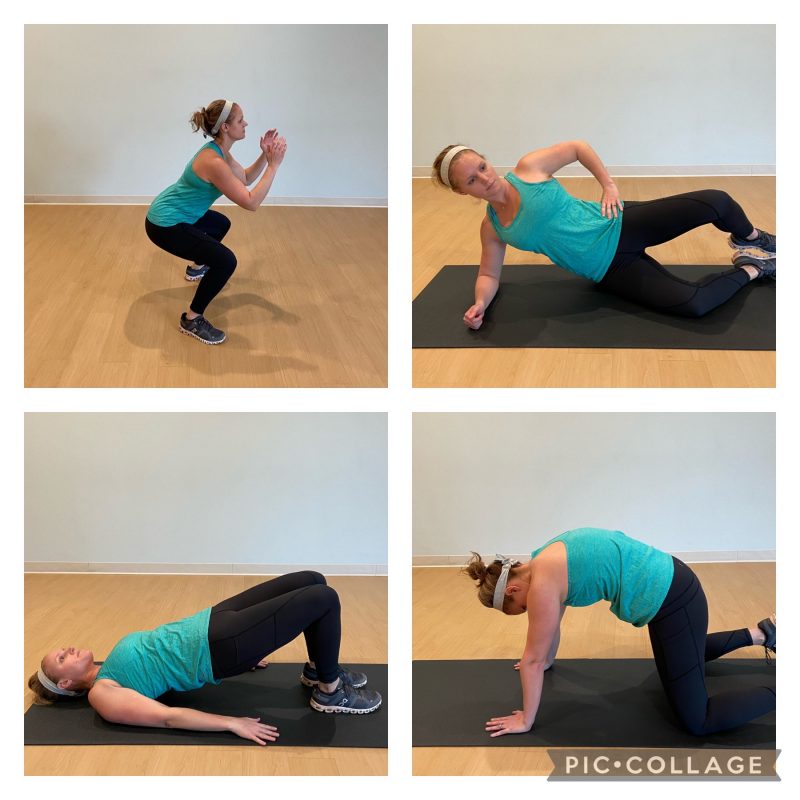Have you ever wondered if those “Kegel” exercises you hear so much about can really make you “tighter”? It’s a question many women ask, often with a mix of hope and curiosity. The truth is, the relationship between pelvic floor exercises and vaginal tightness is a bit more nuanced than a simple yes or no. While Kegels and other pelvic floor exercises can have a significant impact on your sexual health and overall well-being, understanding how and why they work is crucial.

Image: viewfloor.co
The pelvic floor is a group of muscles that forms a kind of hammock supporting your bladder, uterus, and rectum. These muscles play a crucial role in bladder control, bowel function, and sexual sensation. When these muscles are weak, you may experience issues like urinary incontinence, difficulty reaching orgasm, or even pelvic organ prolapse. That’s where pelvic floor exercises come in, helping to strengthen these muscles and improve a range of concerns, including those related to sexual function.
The Complexities of “Tightness”: More Than Just a Feeling
A Misconception about “Tightness”
Let’s start by addressing the elephant in the room: the idea of “tightness” can be misleading and even harmful. When people talk about wanting to be “tighter,” they often associate this with increased sexual pleasure or a feeling of enhanced control. While pelvic floor exercises can positively influence your sexual experience, the feeling of being “tight” is not always the primary goal or the only benefit.
Beyond Tightness: Benefits of a Strong Pelvic Floor
Here’s what’s essential to understand: a strong pelvic floor is about more than just feeling “tight.” It contributes to:
- Improved bladder and bowel control: Strong pelvic floor muscles help prevent leakage and improve control over bladder and bowel functions, reducing the risk of urinary incontinence, fecal incontinence, and even constipation.
- Enhanced sexual sensation: Strengthening these muscles can improve sensitivity in the pelvic region, potentially leading to more intense orgasms and greater overall satisfaction.
- Reduced risk of pelvic organ prolapse: Weak pelvic floor muscles can contribute to pelvic organ prolapse, where organs like the bladder or uterus may begin to descend into the vagina. Strong pelvic floor muscles help support these organs and reduce the risk of prolapse.
- Improved posture and core strength: The pelvic floor muscles play a crucial role in supporting your core, and strengthening them can contribute to better posture and overall core stability.

Image: www.physiofitnc.com
How Pelvic Floor Exercises Work: Understanding the Mechanism
The Power of Muscle Contraction
Pelvic floor exercises, like Kegels, focus on strengthening the muscles that make up the pelvic floor. When you perform these exercises, you are essentially doing a workout for those muscles, making them stronger and more responsive. This improved muscle tone can have a positive impact on sexual function, particularly by enhancing sensation and potentially influencing the intensity of orgasms.
More Than Just “Squeezing”: Proper Technique Matters
But it’s important to be aware that the effect of these exercises on “tightness” isn’t always direct. Instead of thinking about “squeezing” the vagina, focus on engaging the muscles as if you are trying to stop urination or prevent gas from escaping. This targeted muscle engagement is essential for seeing benefits and avoids unnecessary strain on other muscles.
Beyond Kegels: A Variety of Pelvic Floor Exercises
Kegels: The Classic, but Not the Only Option
Kegels are the most well-known pelvic floor exercise, but they aren’t the only option. While Kegels are a good starting point, incorporating other exercises like:
- Pelvic floor lifts: Imagine you’re lifting an object with your pelvic floor muscles, contracting them up towards your abdomen.
- Squeeze and hold: Contract your pelvic floor muscles and hold for several seconds, then slowly release. Repeat this process multiple times.
Working with a Professional: Personalized Guidance
If you’re unsure about proper technique or are looking for more specific exercises tailored to your individual needs, it’s highly recommended to consult a pelvic floor physical therapist. They can assess your muscles, provide personalized exercises, and address any underlying concerns you might have.
Addressing Concerns about “Tightness” in a Holistic Way
The Role of Lubrication
Remember, “tightness” should not be the sole focus of sexual health discussions. For many women, effective lubrication is essential for comfortable and pleasurable sexual experiences. Don’t hesitate to explore different lubricants if you find yourself feeling dryness or discomfort during sexual activity.
Open Communication: A Foundation for Healthy Intimacy
The most crucial element in navigating sexual health is open and honest communication with your partner. Discuss any concerns or anxieties you have, and work together to find solutions that enhance your intimacy, fostering a positive and fulfilling sexual experience.
Will Pelvic Floor Exercises Make Me Tighter
Conclusion: Pelvic Floor Exercises for a Stronger You
In conclusion, pelvic floor exercises are valuable tools for promoting overall well-being, and they can positively influence your sexual health. While they might not directly create a feeling of “tightness,” they can contribute to improved sensation, better bladder and bowel control, and reduced risk of prolapse. Remember, a strong pelvic floor is about feeling confident and empowered, not simply feeling “tight.” So, embrace the benefits of these exercises and prioritize your overall health and well-being. If you have any concerns or questions, don’t hesitate to reach out to a medical professional for expert guidance and personalized advice.






